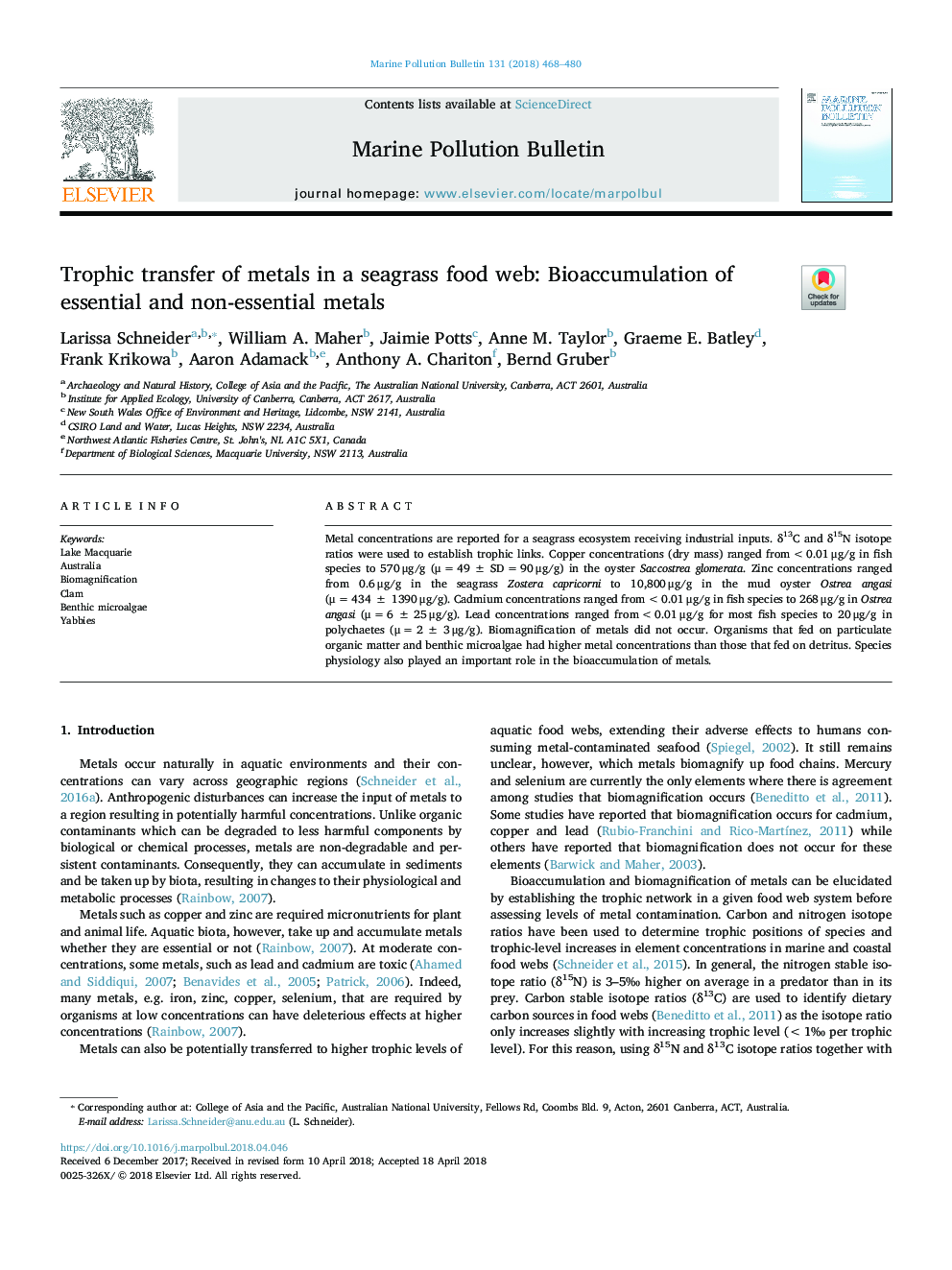| Article ID | Journal | Published Year | Pages | File Type |
|---|---|---|---|---|
| 8871036 | Marine Pollution Bulletin | 2018 | 13 Pages |
Abstract
Metal concentrations are reported for a seagrass ecosystem receiving industrial inputs. δ13C and δ15N isotope ratios were used to establish trophic links. Copper concentrations (dry mass) ranged from <0.01â¯Î¼g/g in fish species to 570â¯Î¼g/g (μâ¯=â¯49â¯Â±â¯SDâ¯=â¯90â¯Î¼g/g) in the oyster Saccostrea glomerata. Zinc concentrations ranged from 0.6â¯Î¼g/g in the seagrass Zostera capricorni to 10,800â¯Î¼g/g in the mud oyster Ostrea angasi (μâ¯=â¯434â¯Â±â¯1390â¯Î¼g/g). Cadmium concentrations ranged from <0.01â¯Î¼g/g in fish species to 268â¯Î¼g/g in Ostrea angasi (μâ¯=â¯6â¯Â±â¯25â¯Î¼g/g). Lead concentrations ranged from <0.01â¯Î¼g/g for most fish species to 20â¯Î¼g/g in polychaetes (μâ¯=â¯2â¯Â±â¯3â¯Î¼g/g). Biomagnification of metals did not occur. Organisms that fed on particulate organic matter and benthic microalgae had higher metal concentrations than those that fed on detritus. Species physiology also played an important role in the bioaccumulation of metals.
Related Topics
Physical Sciences and Engineering
Earth and Planetary Sciences
Oceanography
Authors
Larissa Schneider, William A. Maher, Jaimie Potts, Anne M. Taylor, Graeme E. Batley, Frank Krikowa, Aaron Adamack, Anthony A. Chariton, Bernd Gruber,
